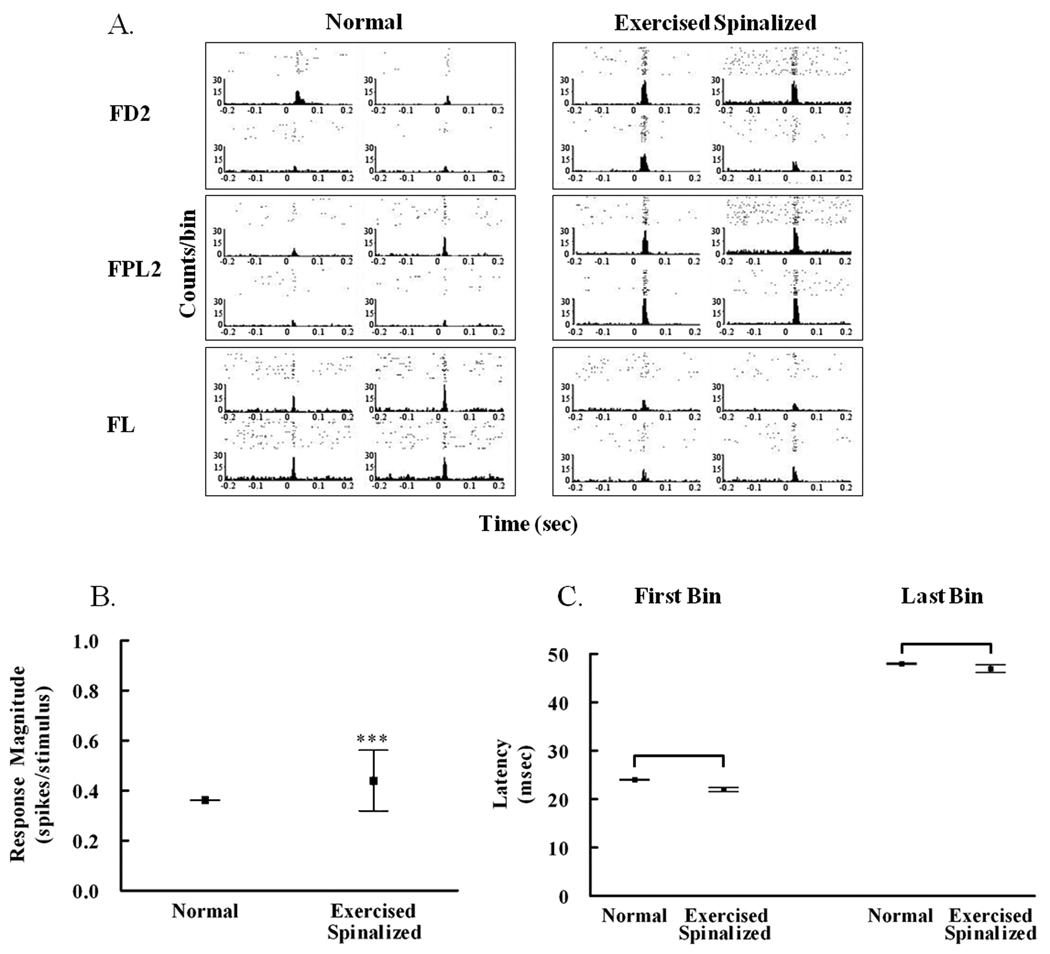Figure 3.
Exercise increased the response magnitude of cells in the infragranular hindlimb cortex to forelimb stimulation in spinalized rats. A. Examples of peri-stimulus time histograms showing the responses of four infragranular hindlimb cells recorded simultaneously from each of three stimulus locations: forepaw digit 2 (FD2), forepaw palm pad 5 (FPL5) and forelimb (FL). B. The average response magnitude of infragranular cells within the hindlimb somatosensory cortex of exercised spinalized rats (0.4408±0.12 spikes/stimulus, # of rats = 10) was greater than that of normal rats (0.3625±0.002 spikes/stimulus, # of rats = 9), ***p<0.001. C. No differences were observed between the first bin latency of exercised spinalized rats (22±0.4 msec) vs that of normals (24±0.08 msec), or the last bin latency of exercised spinalized rats (47±0.8 msec) vs that of normals (48±0.13 msec).

